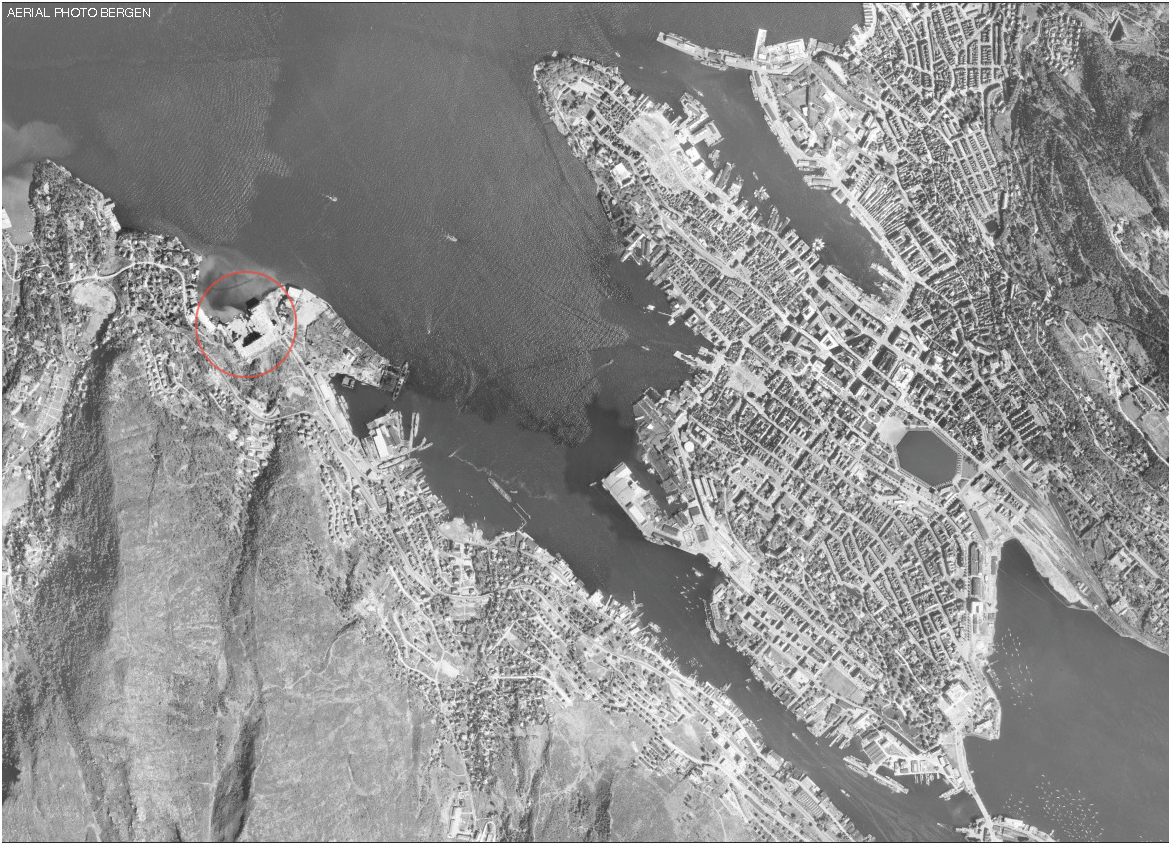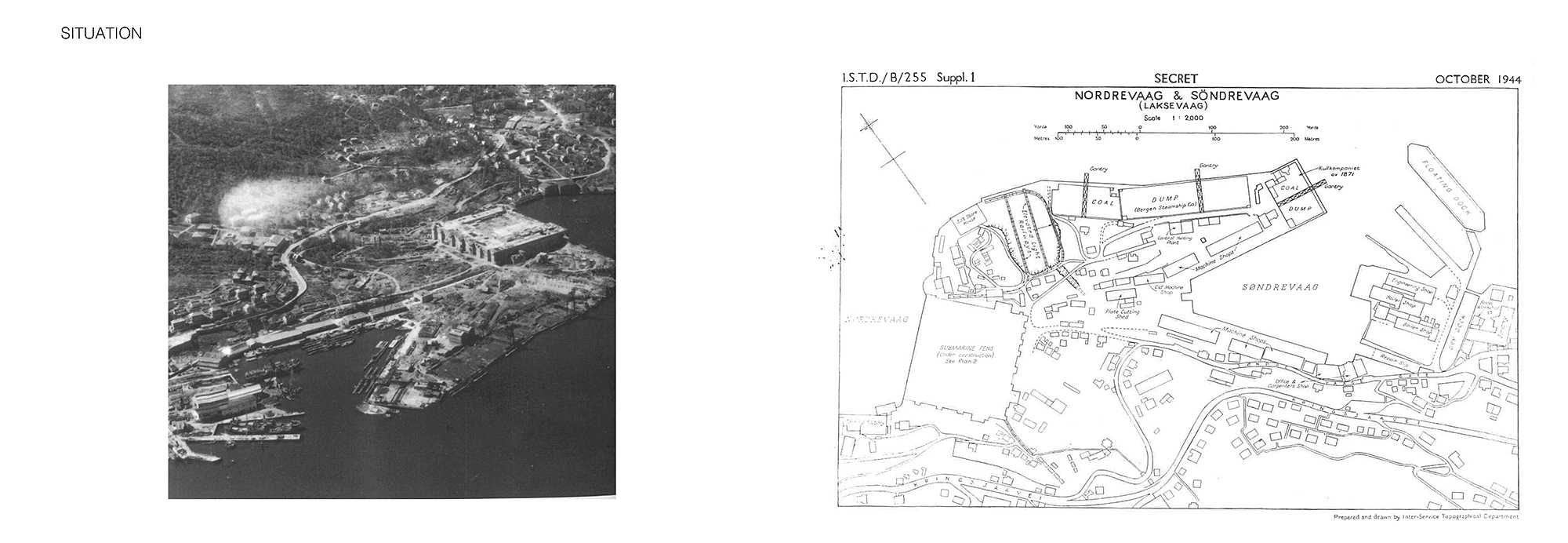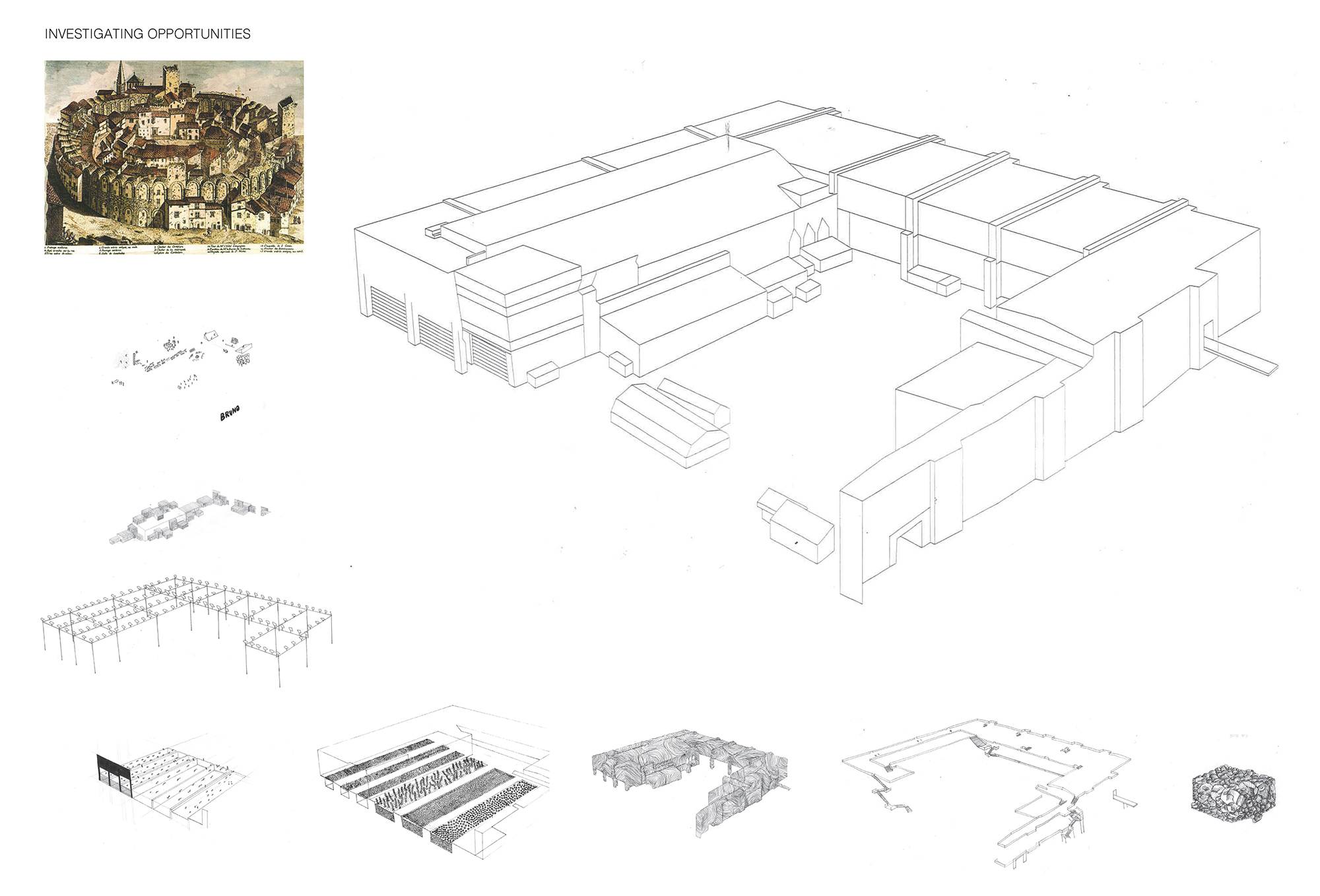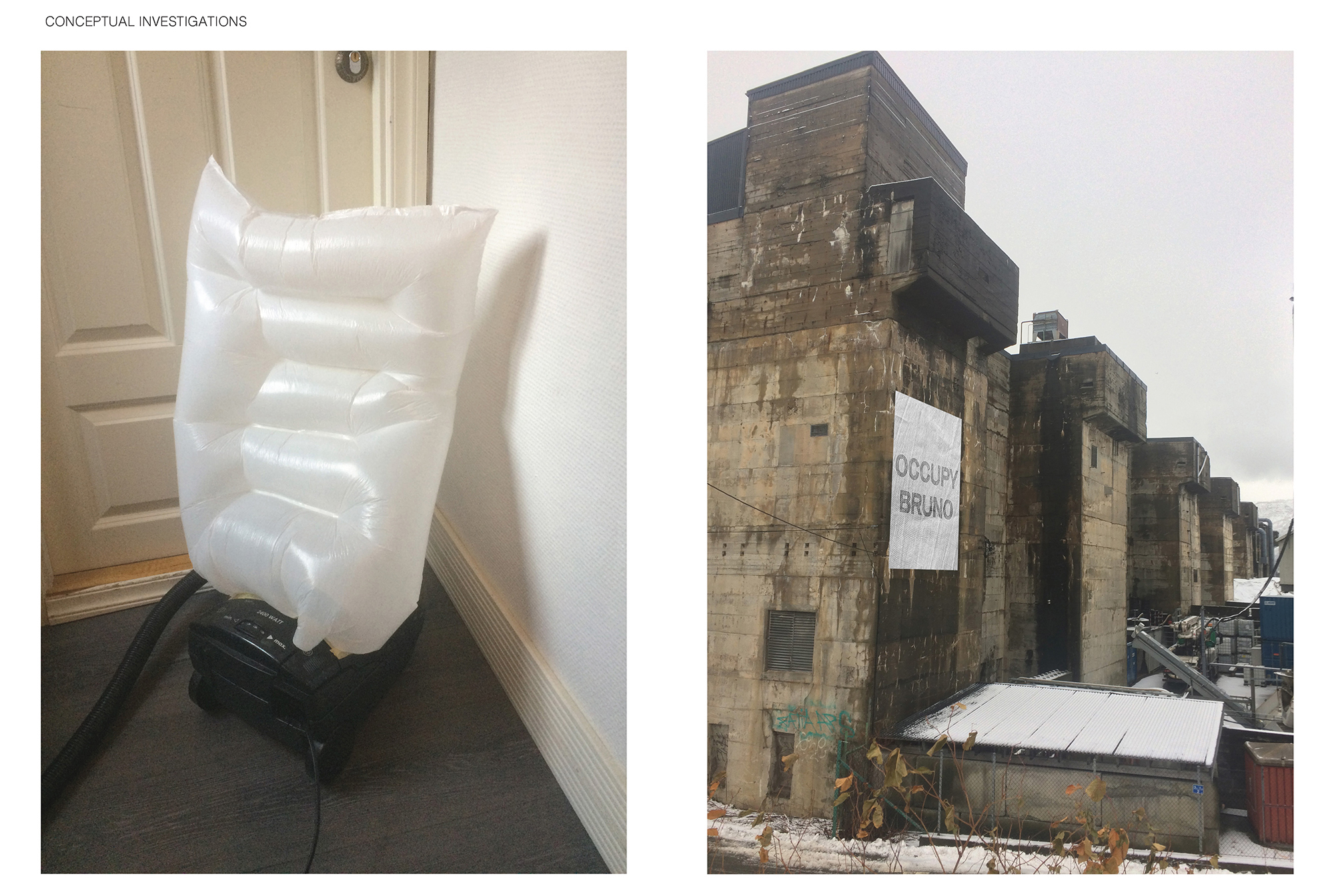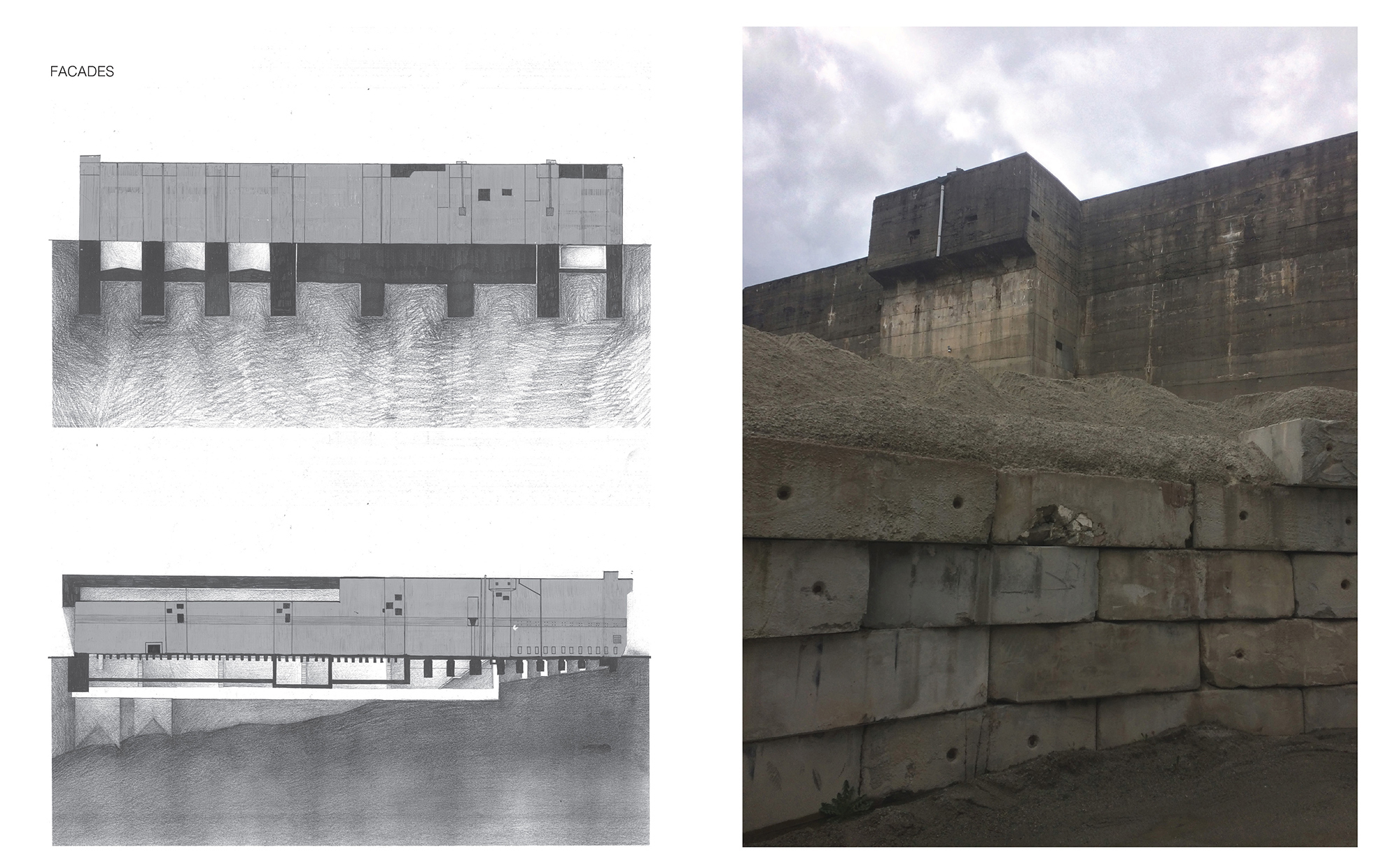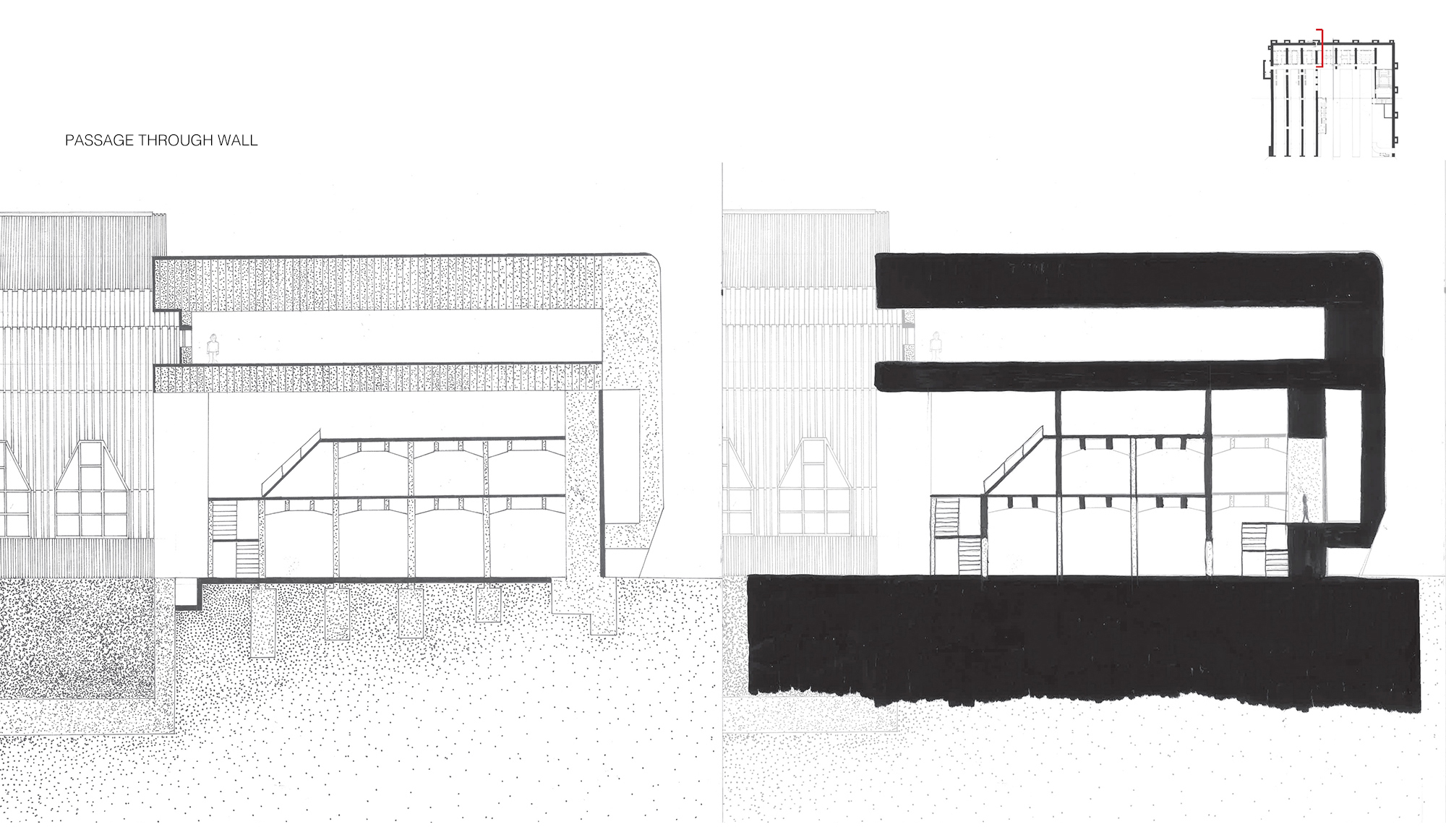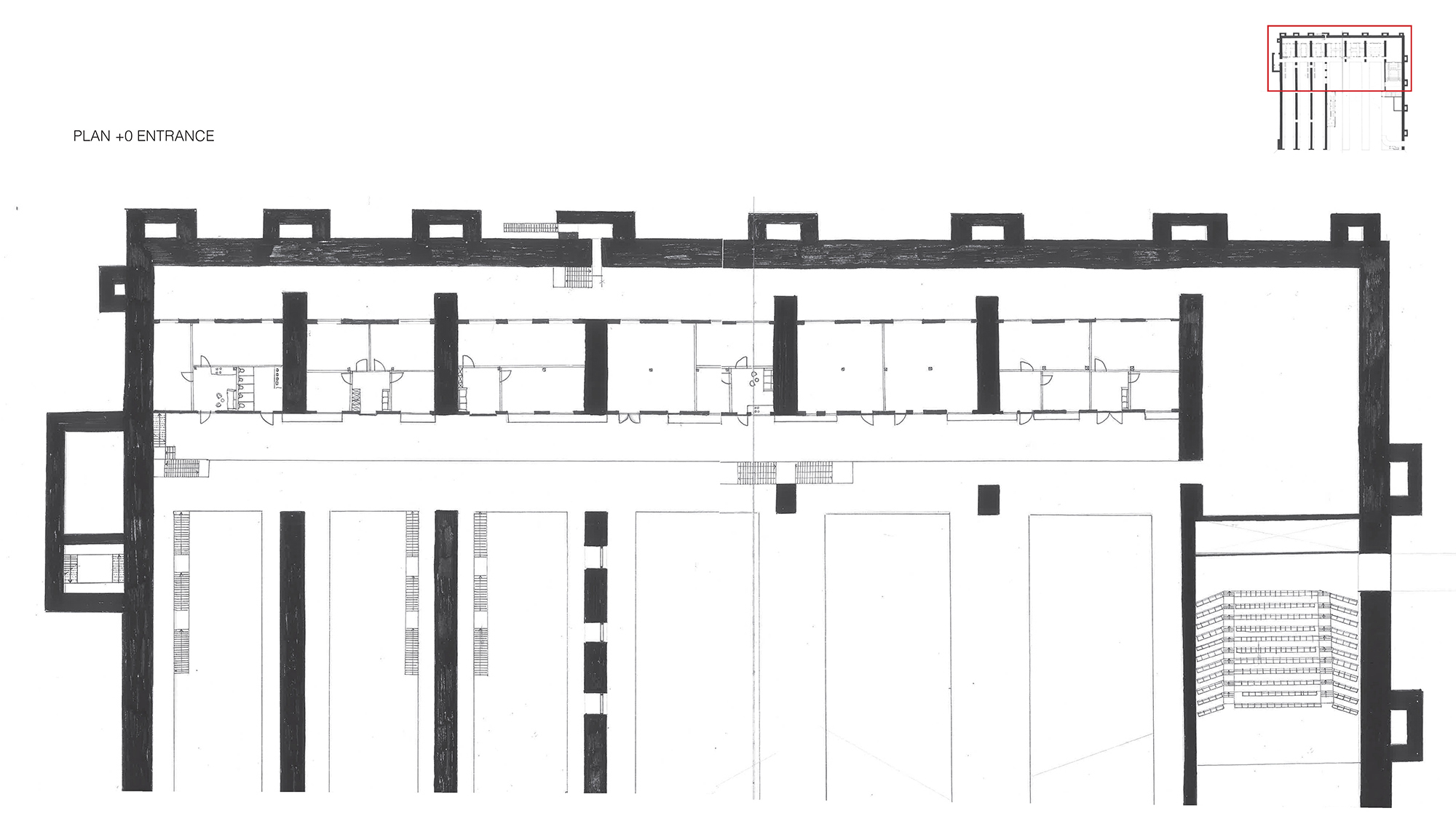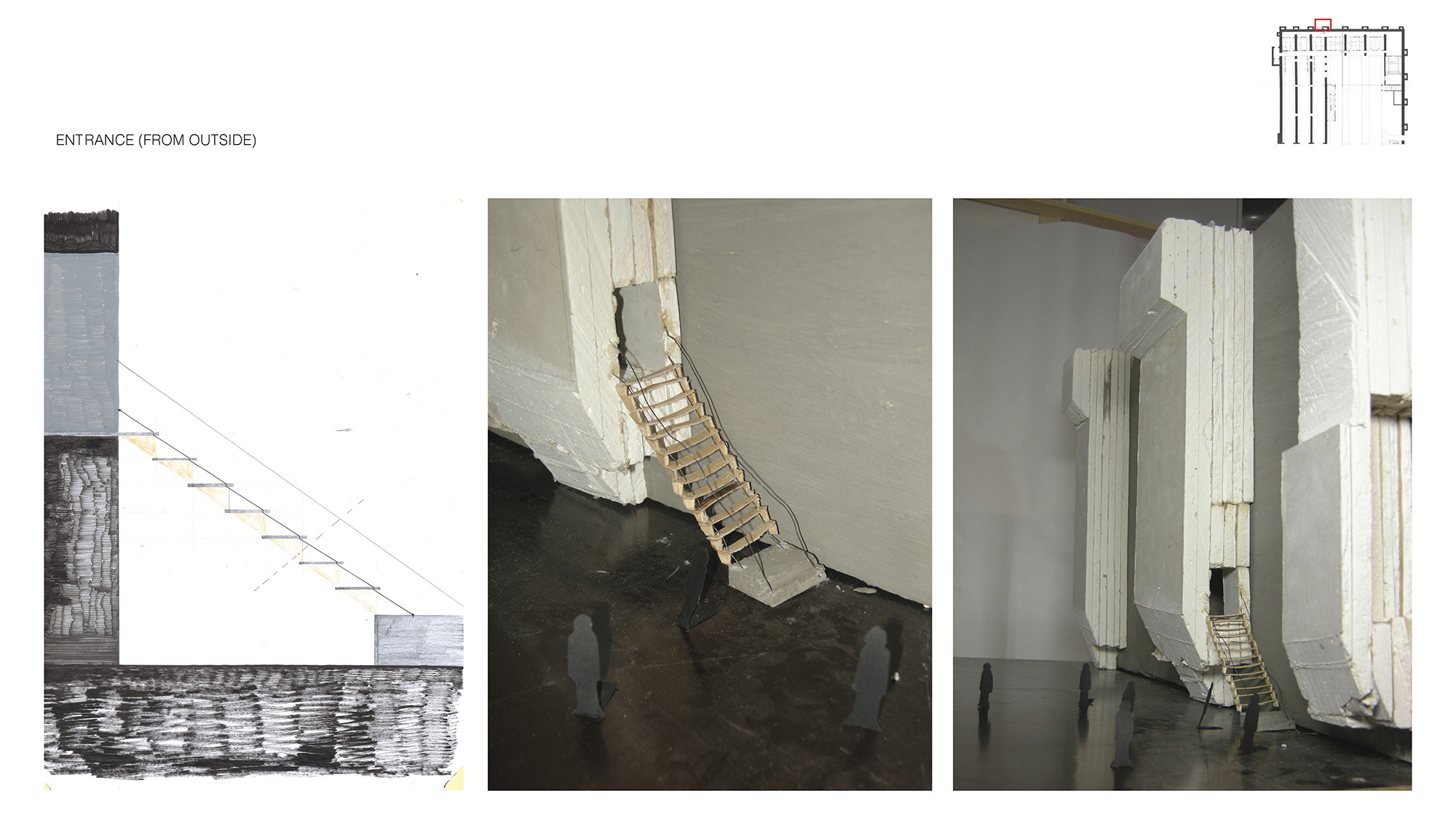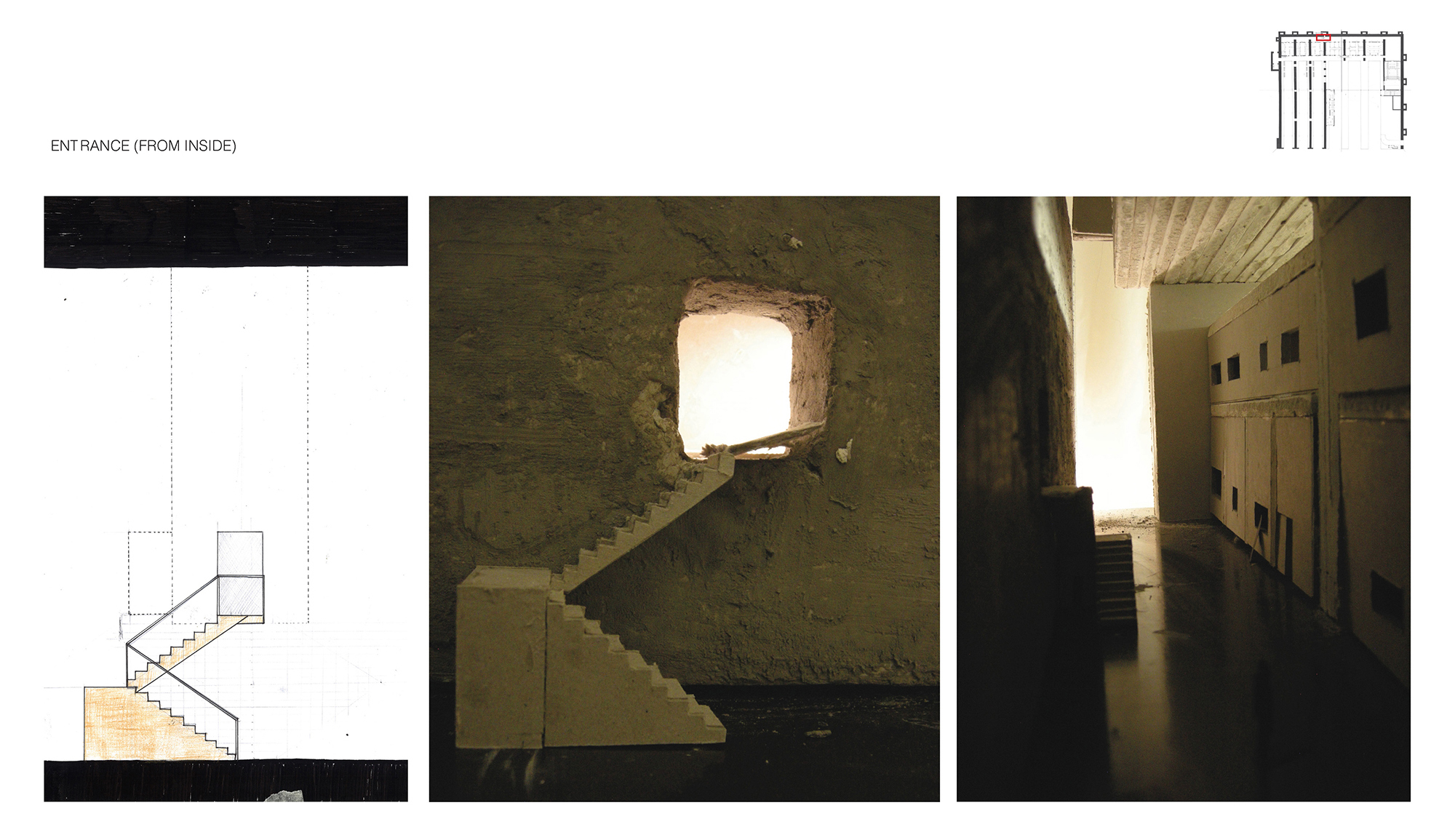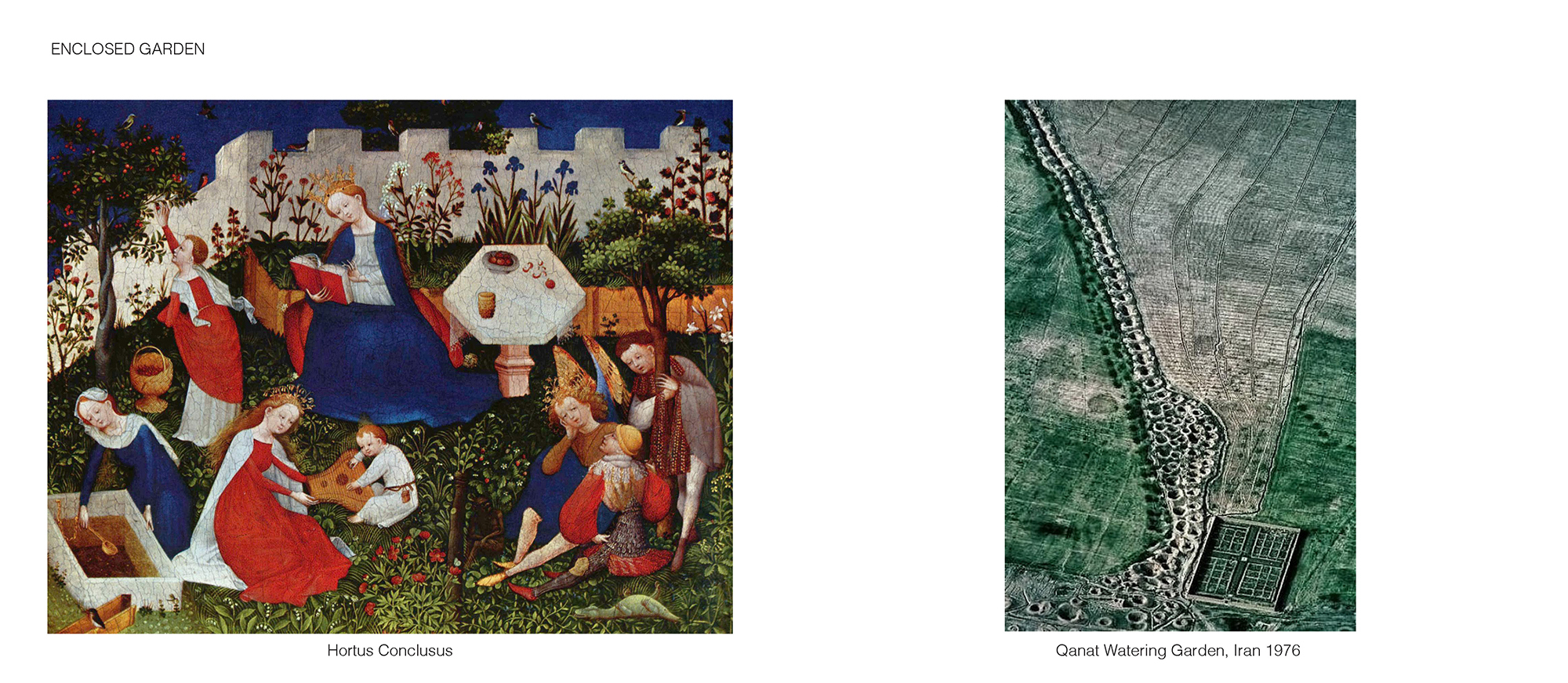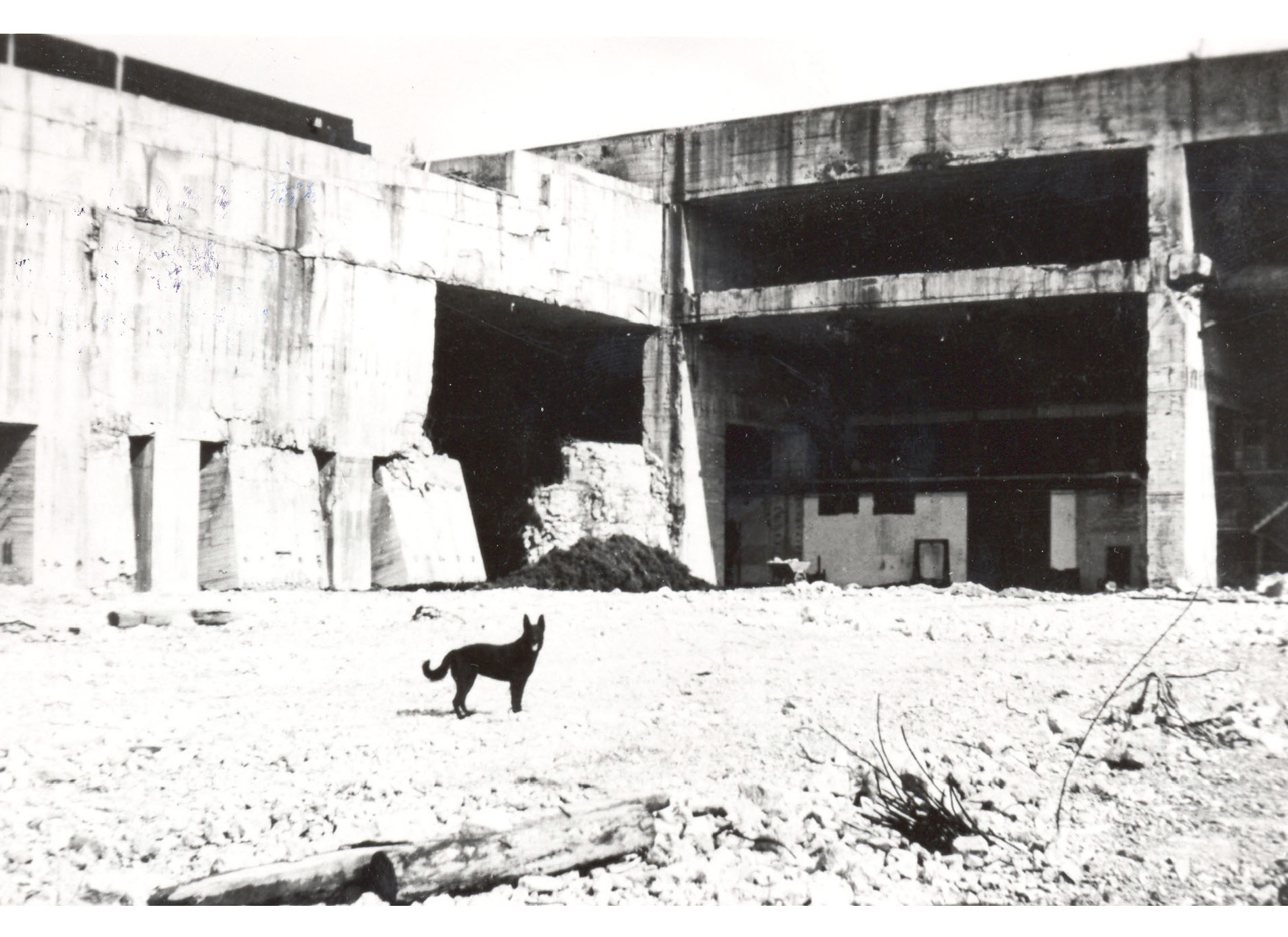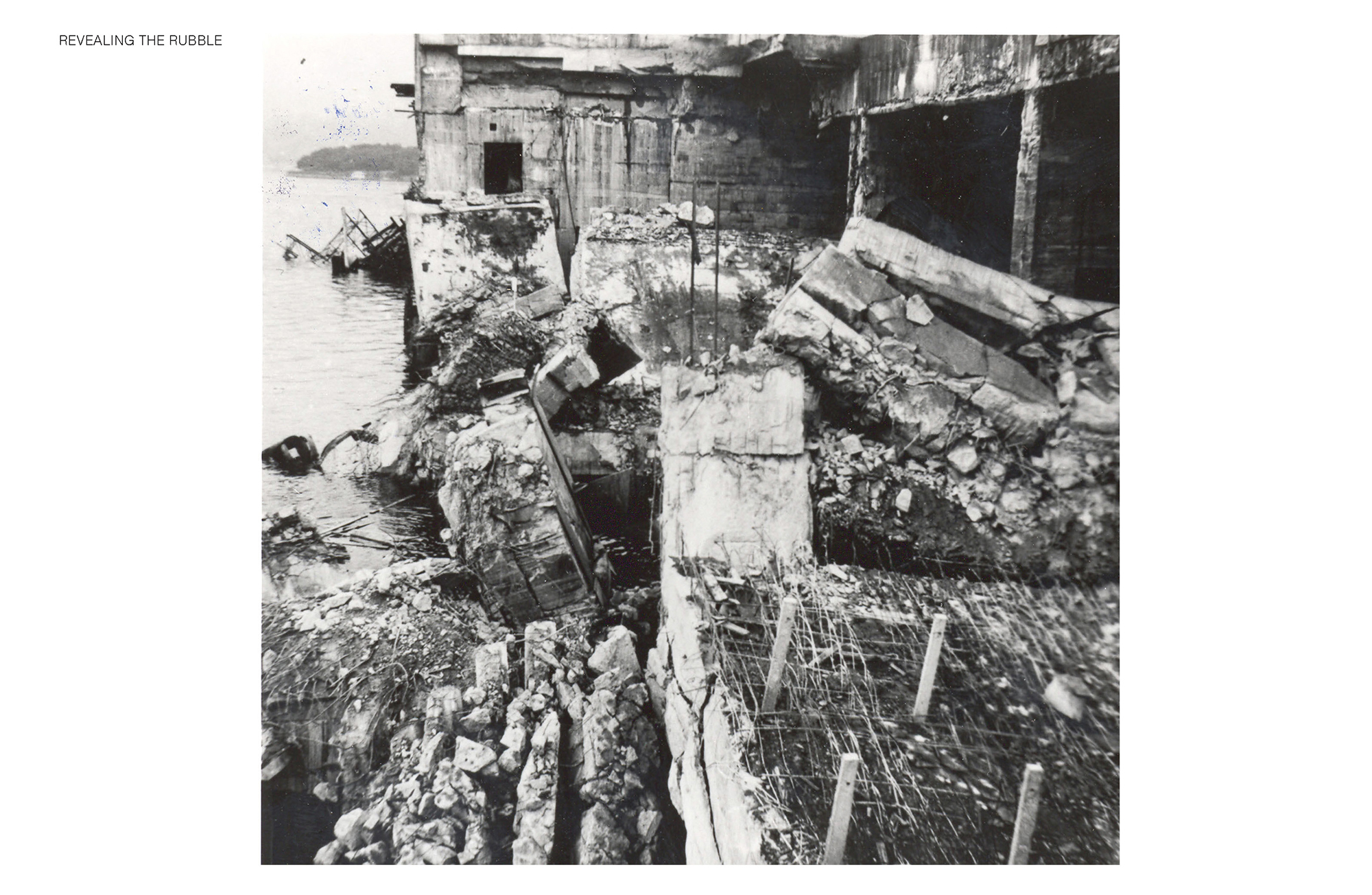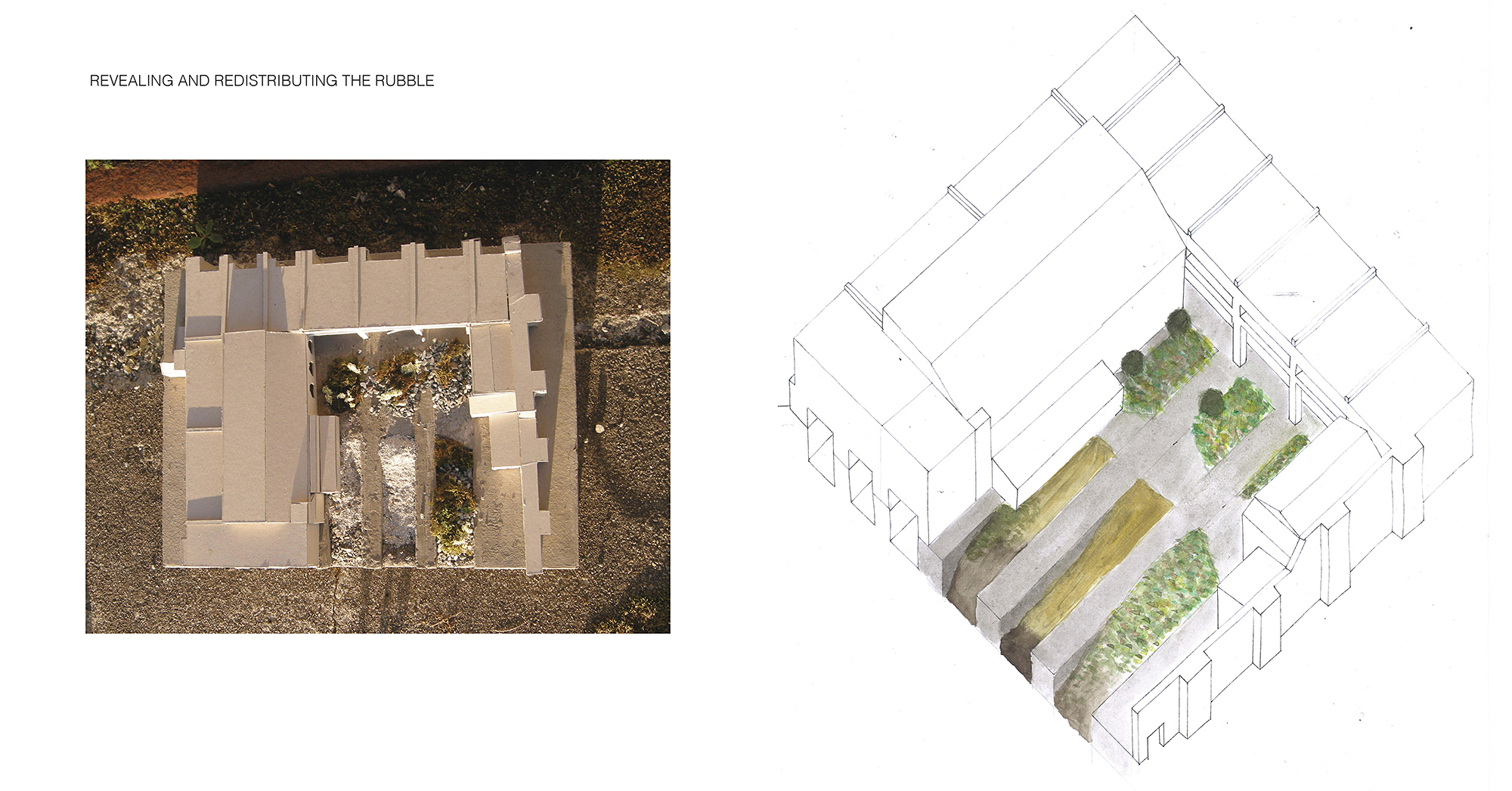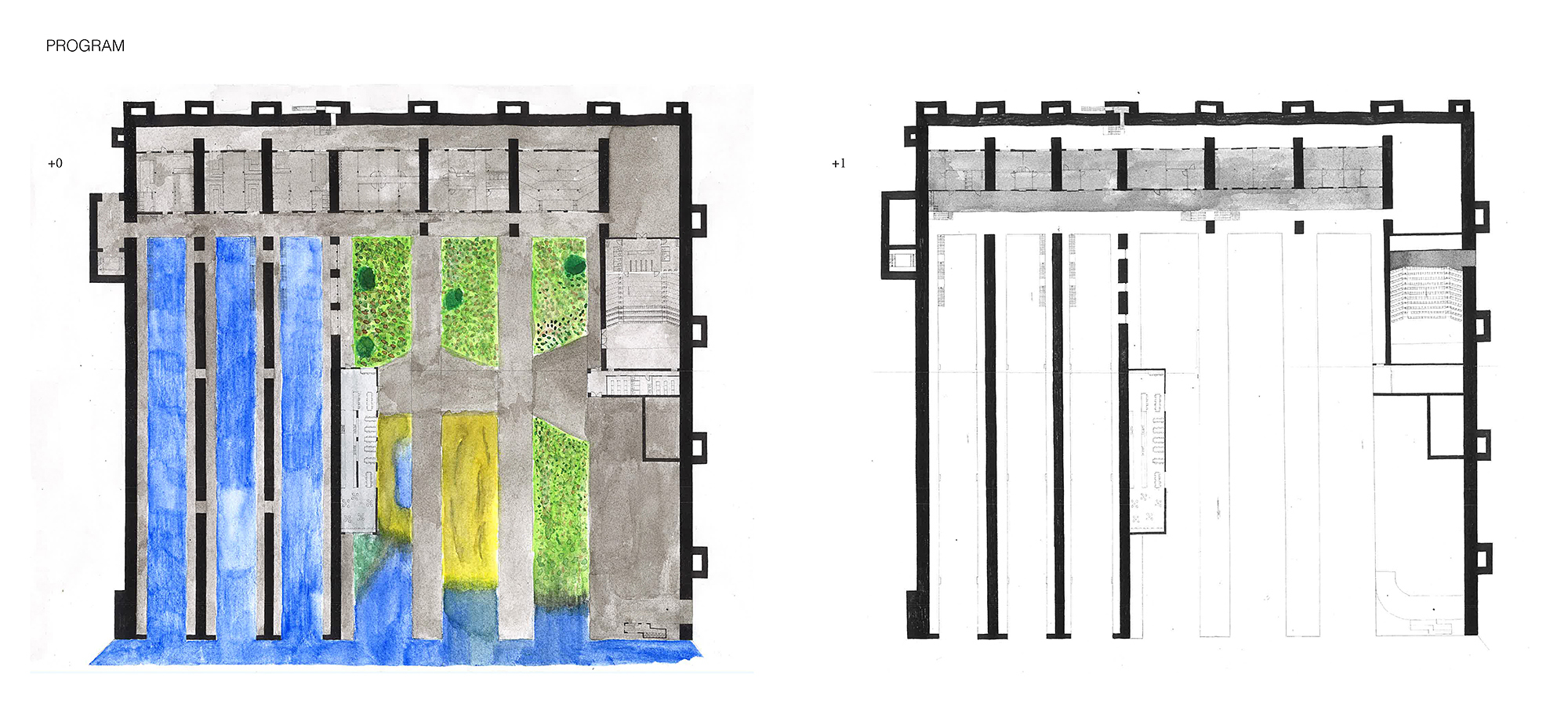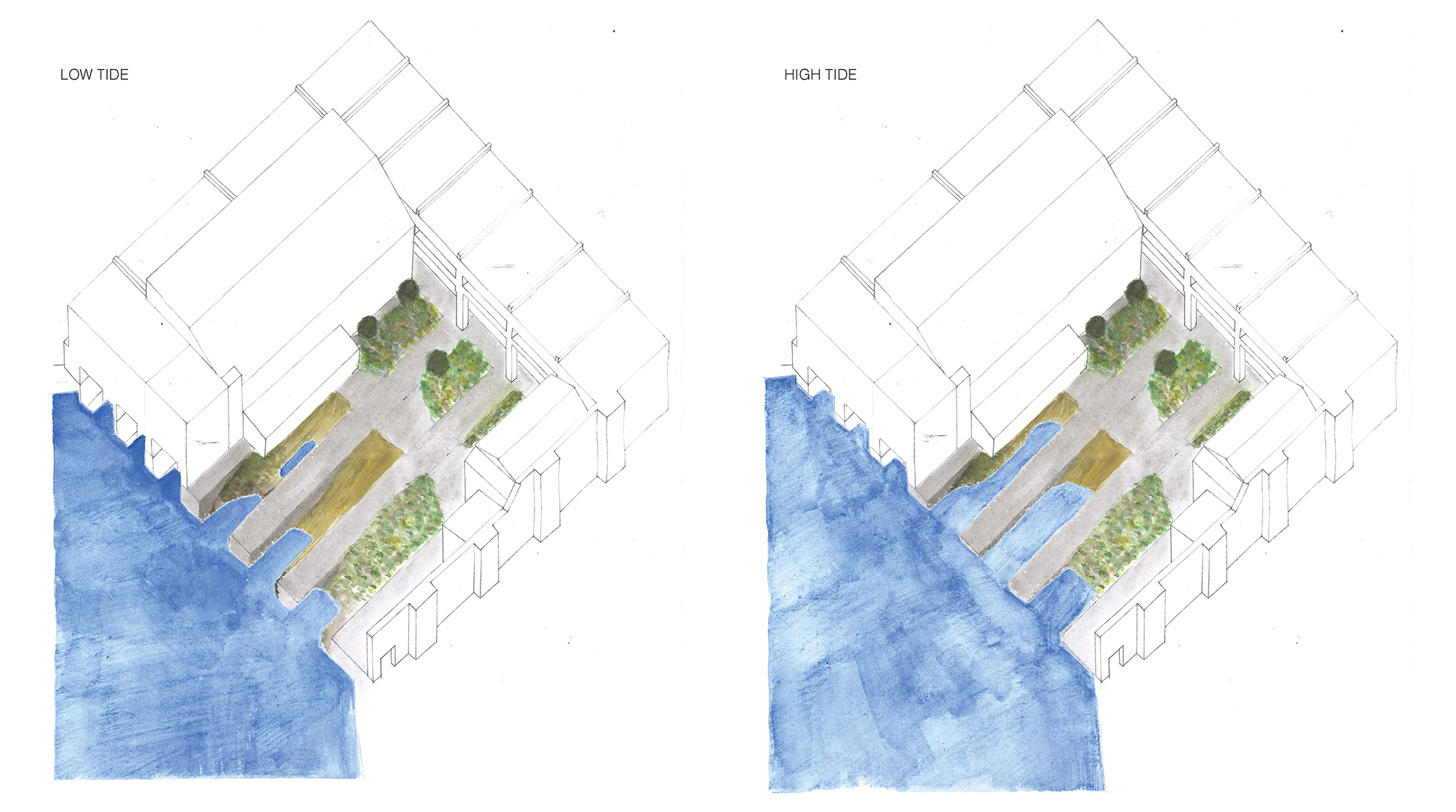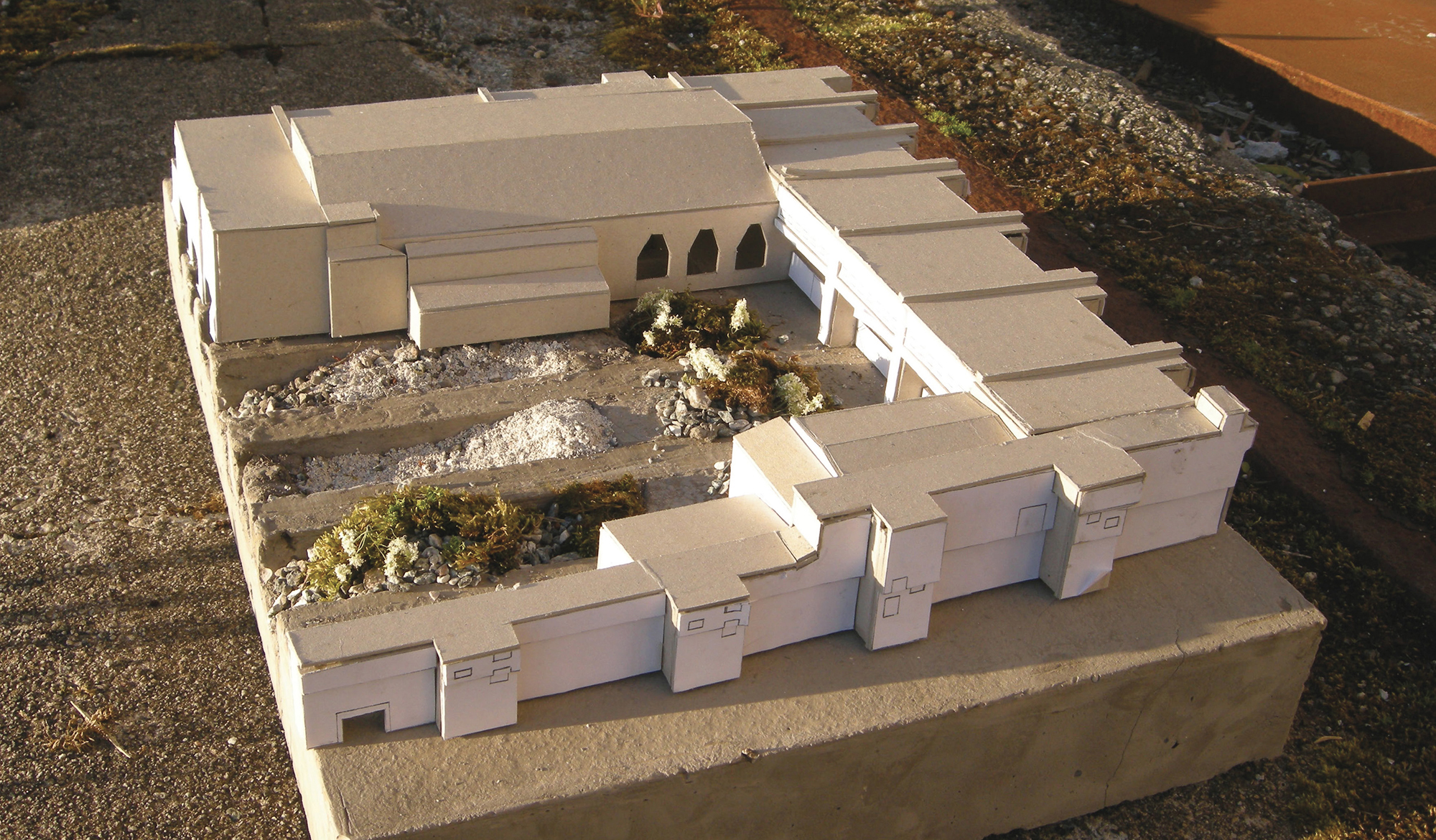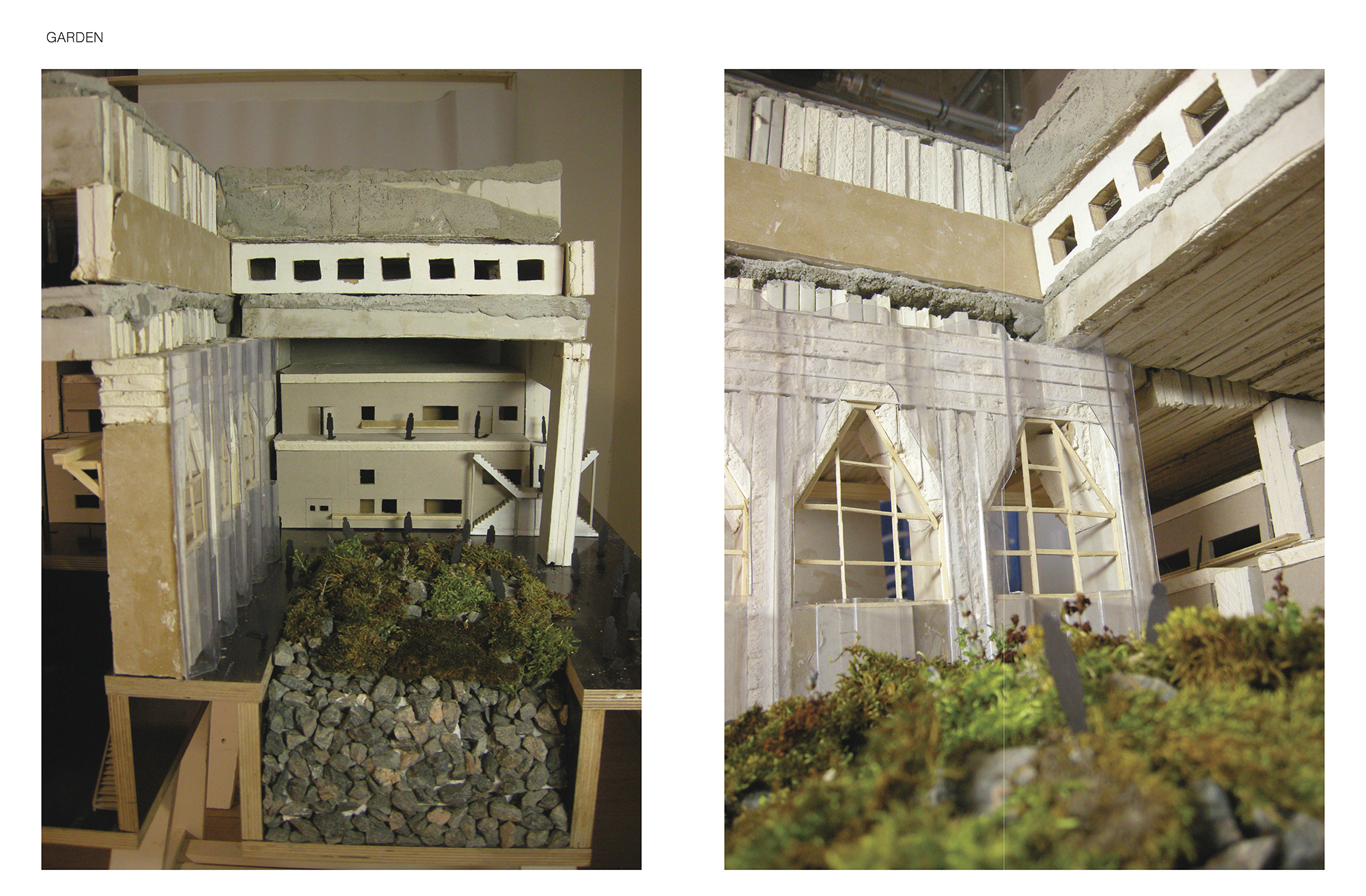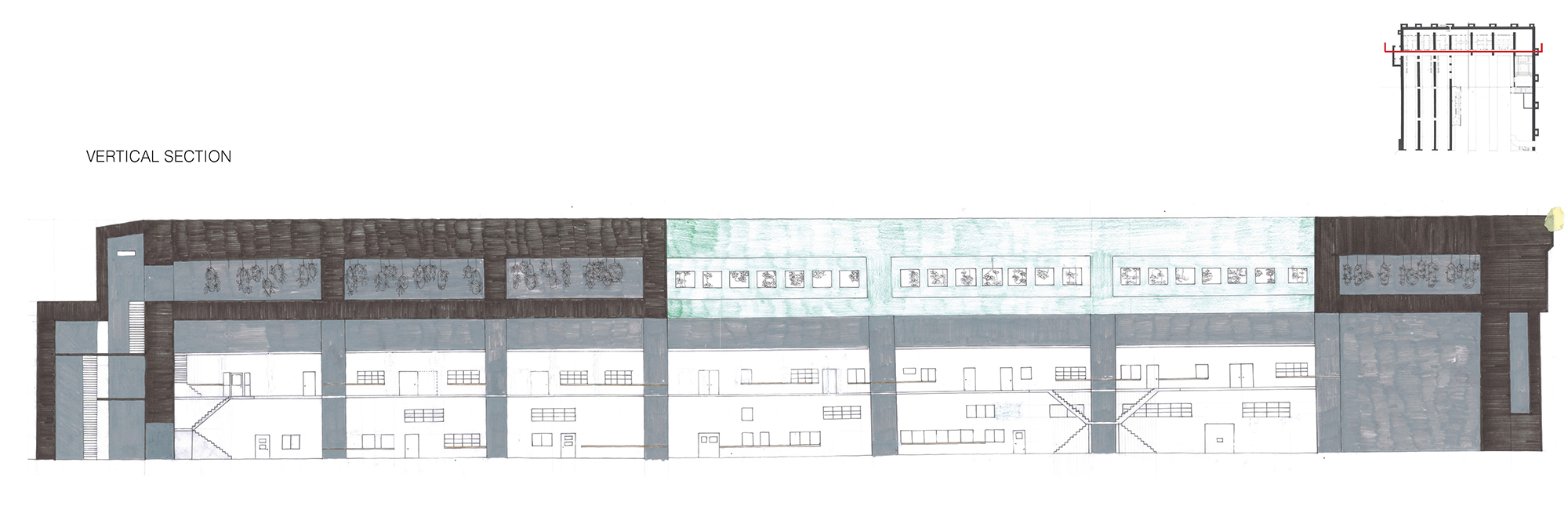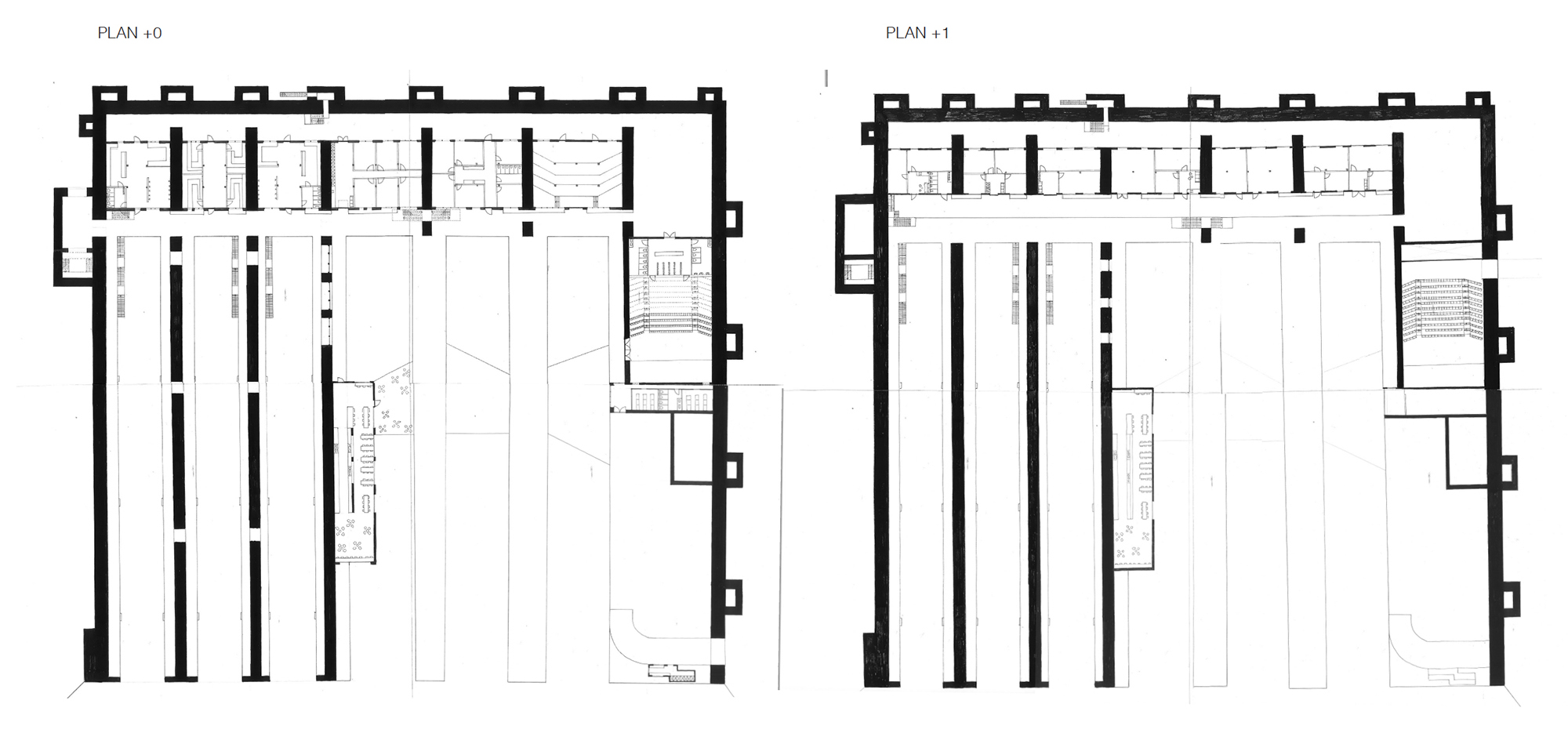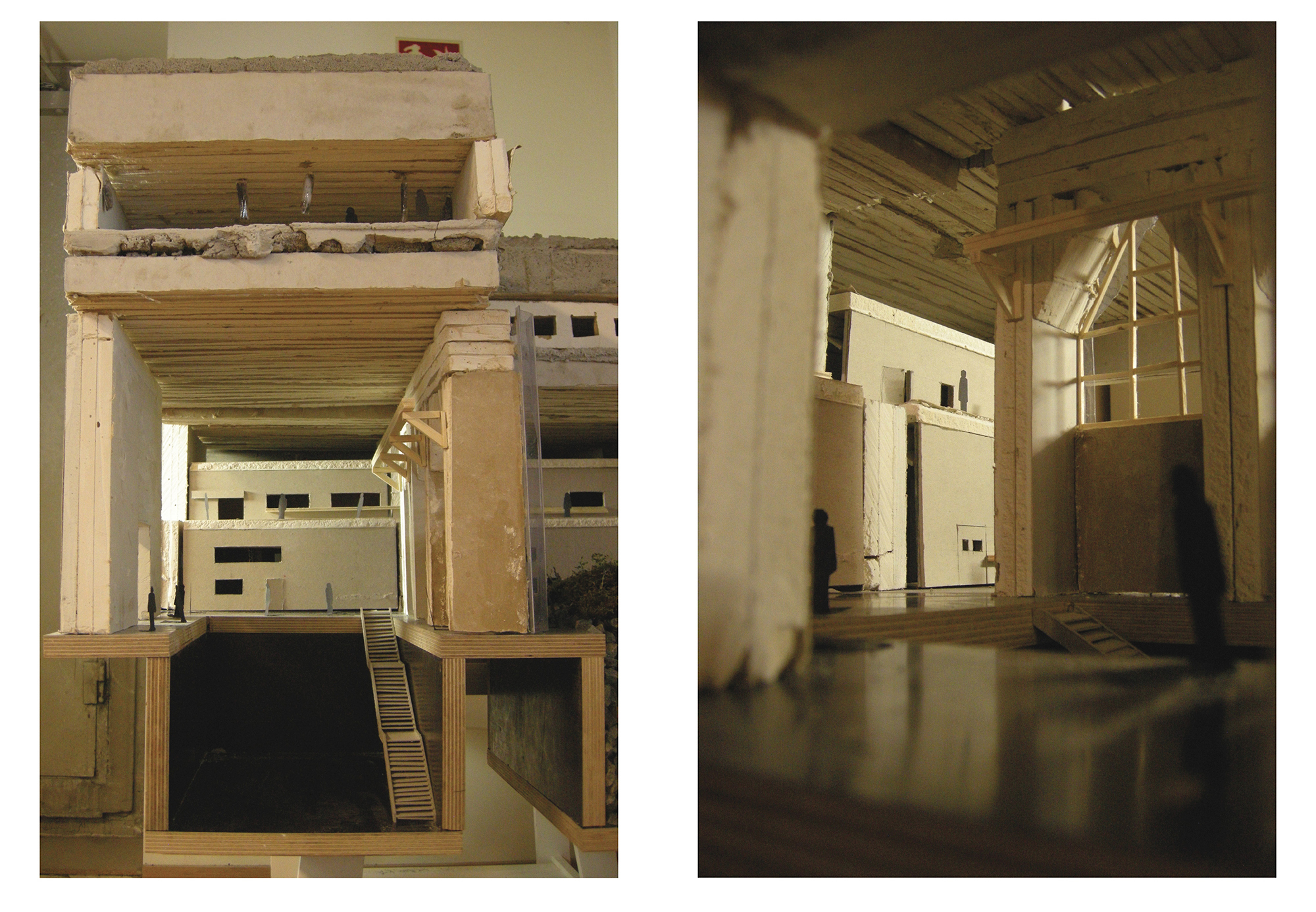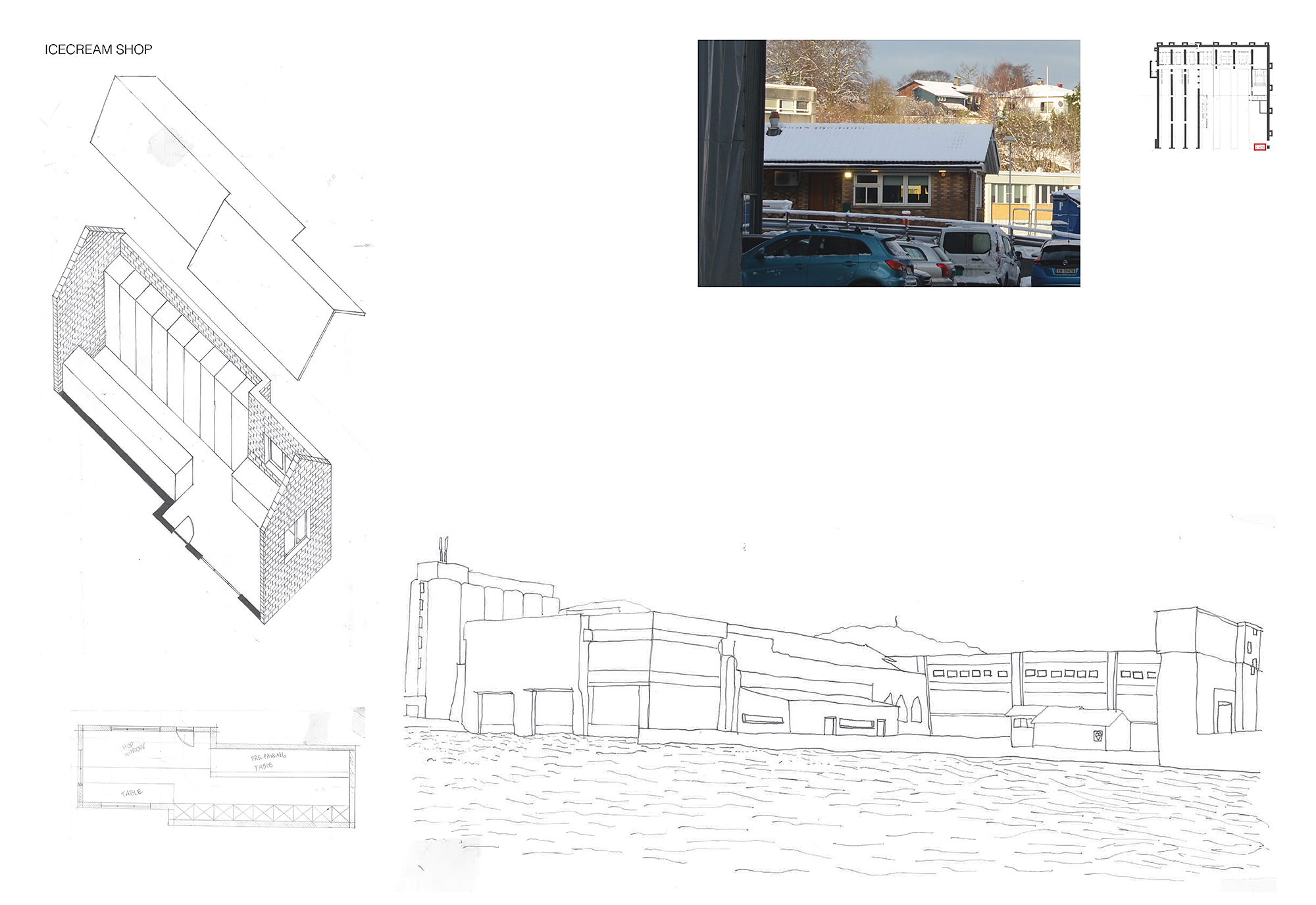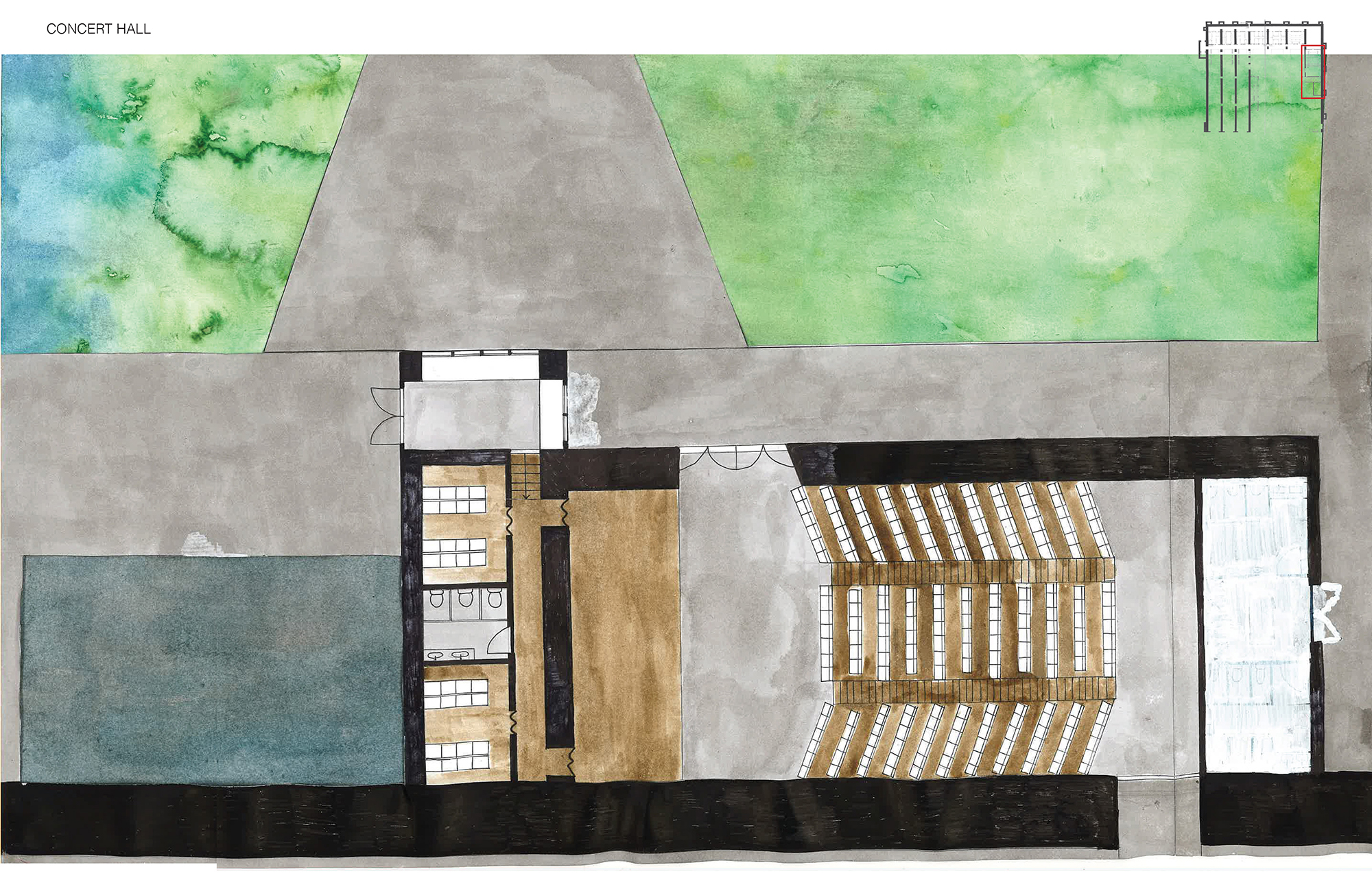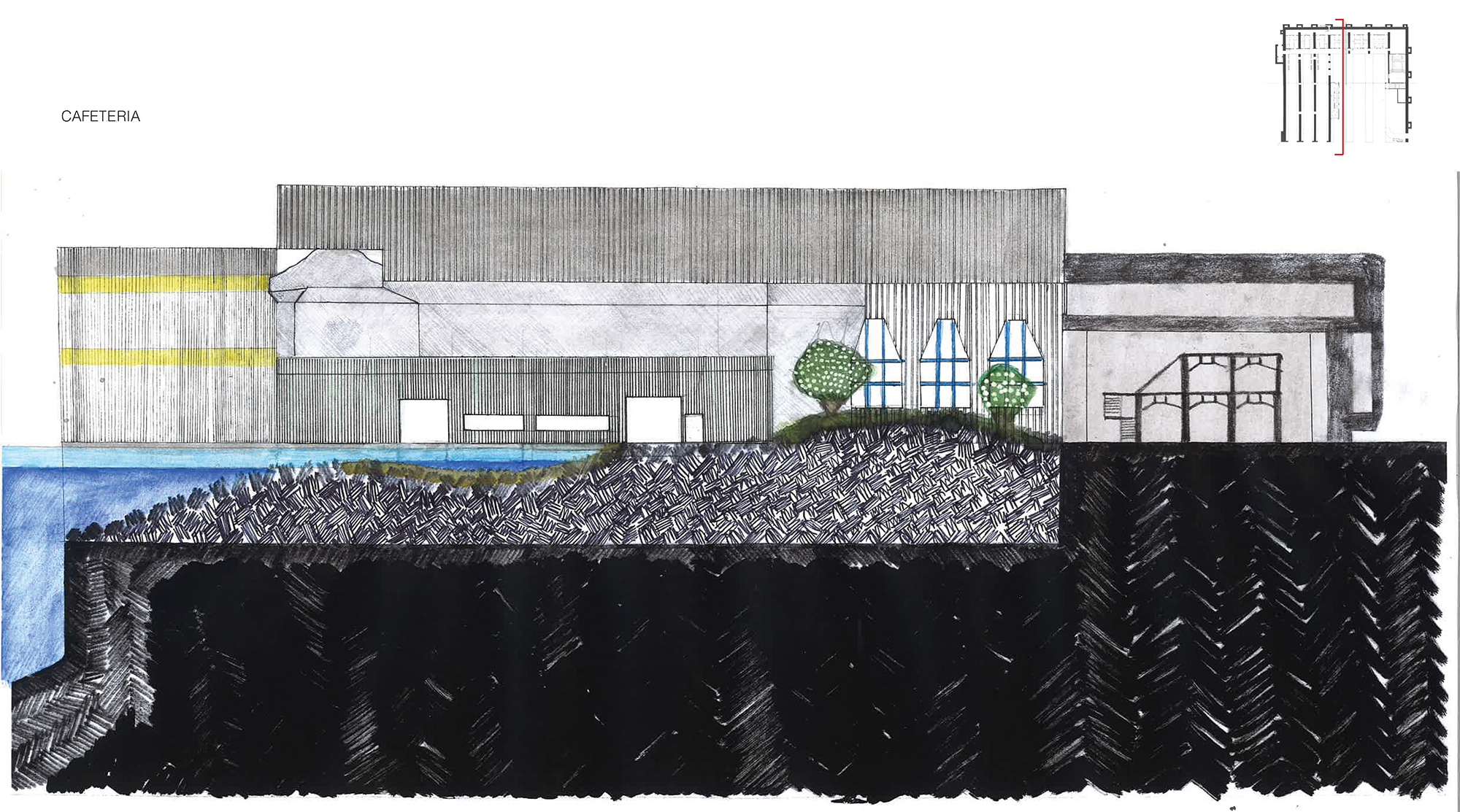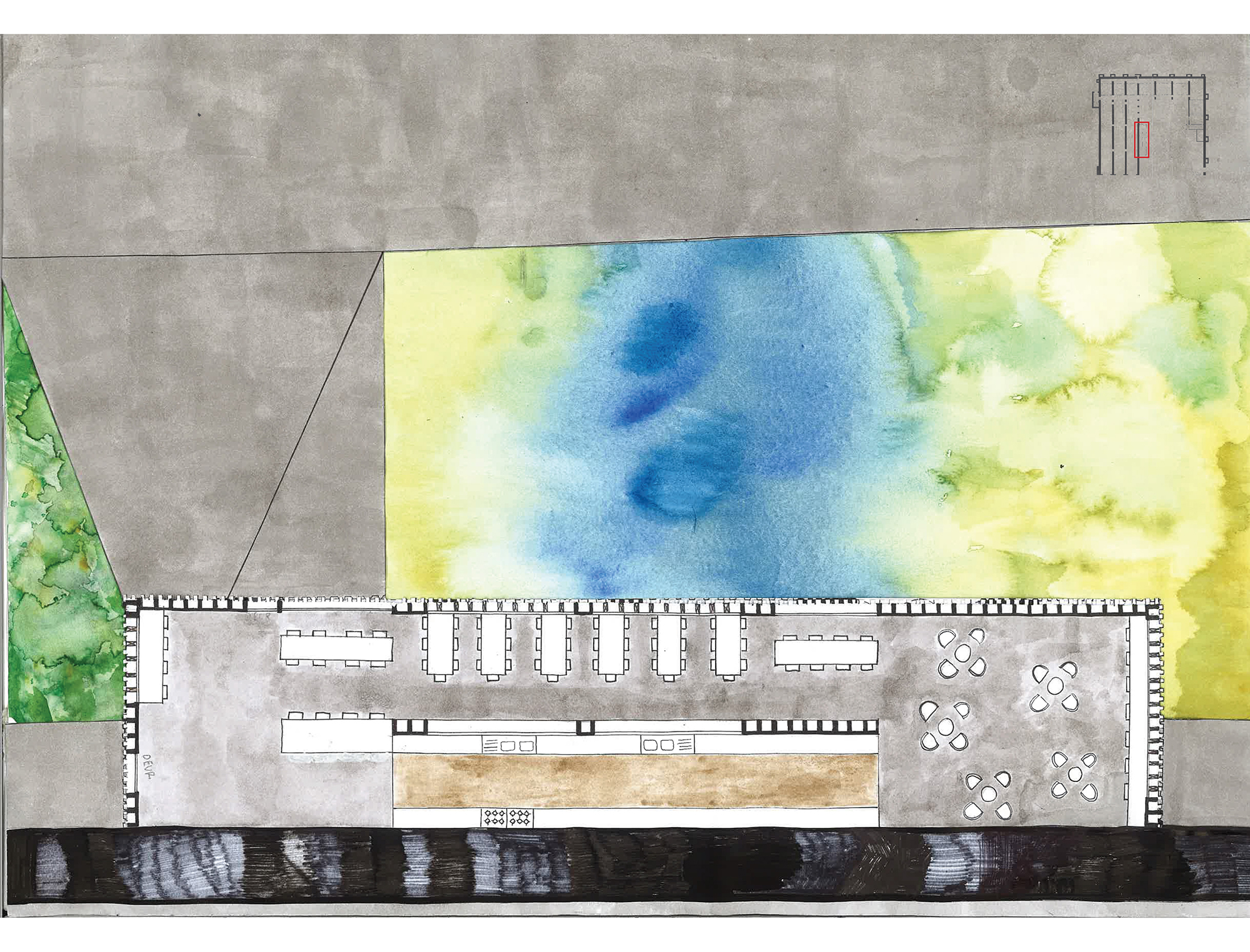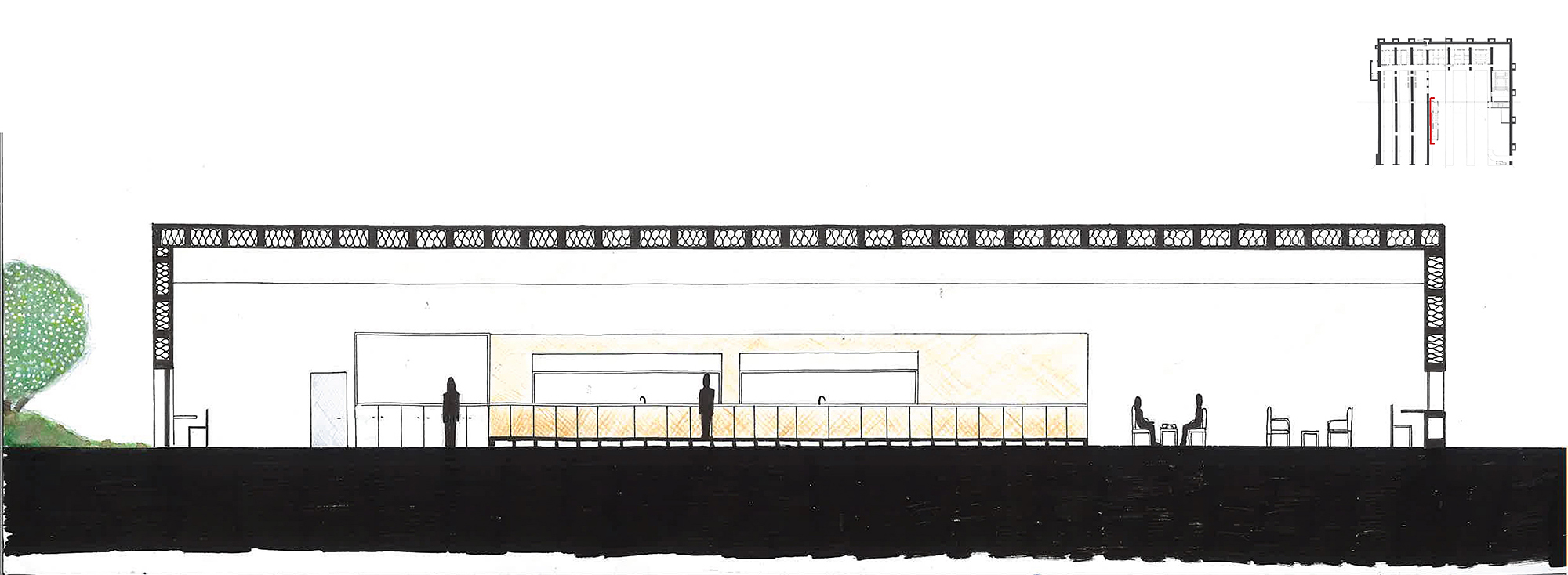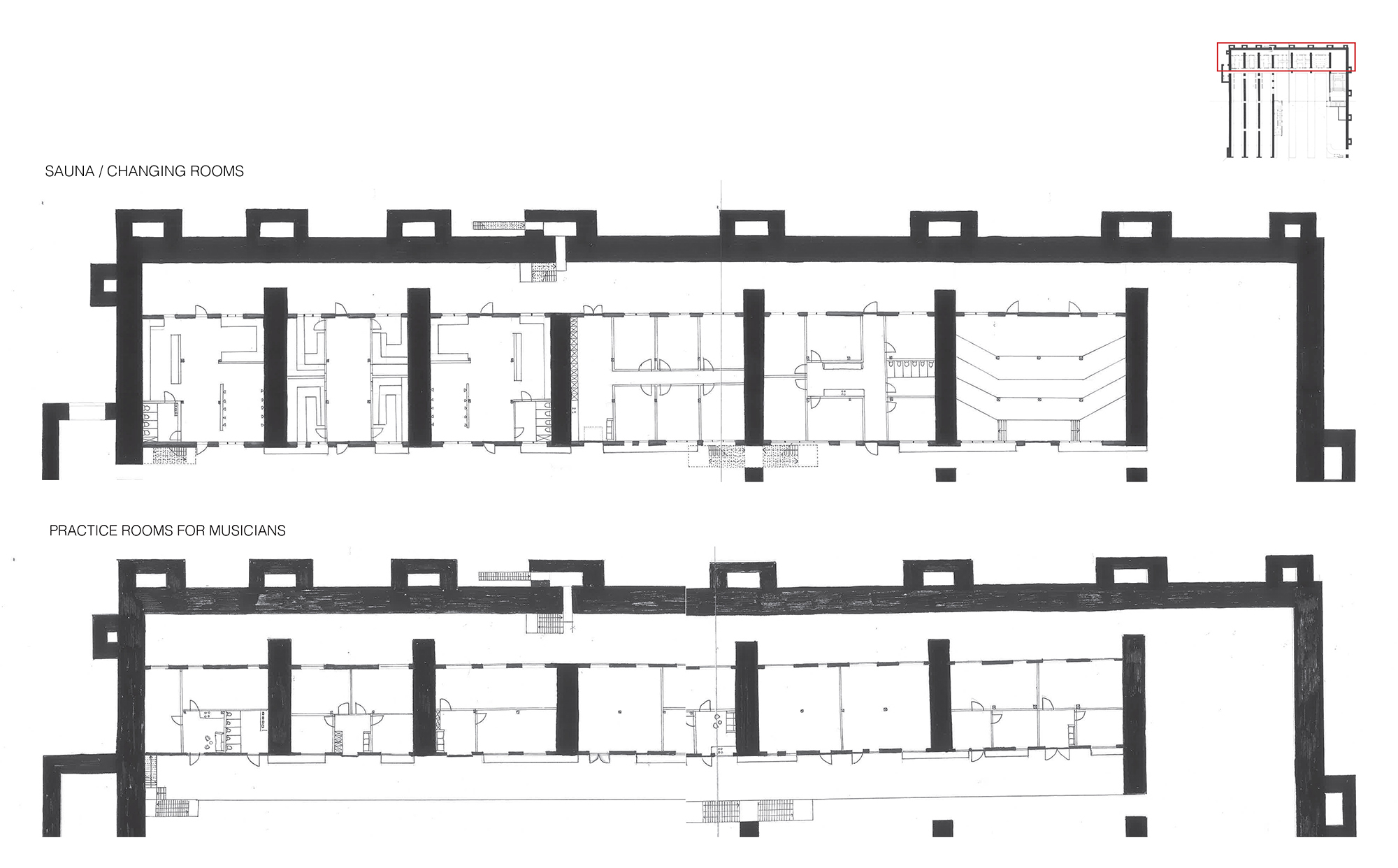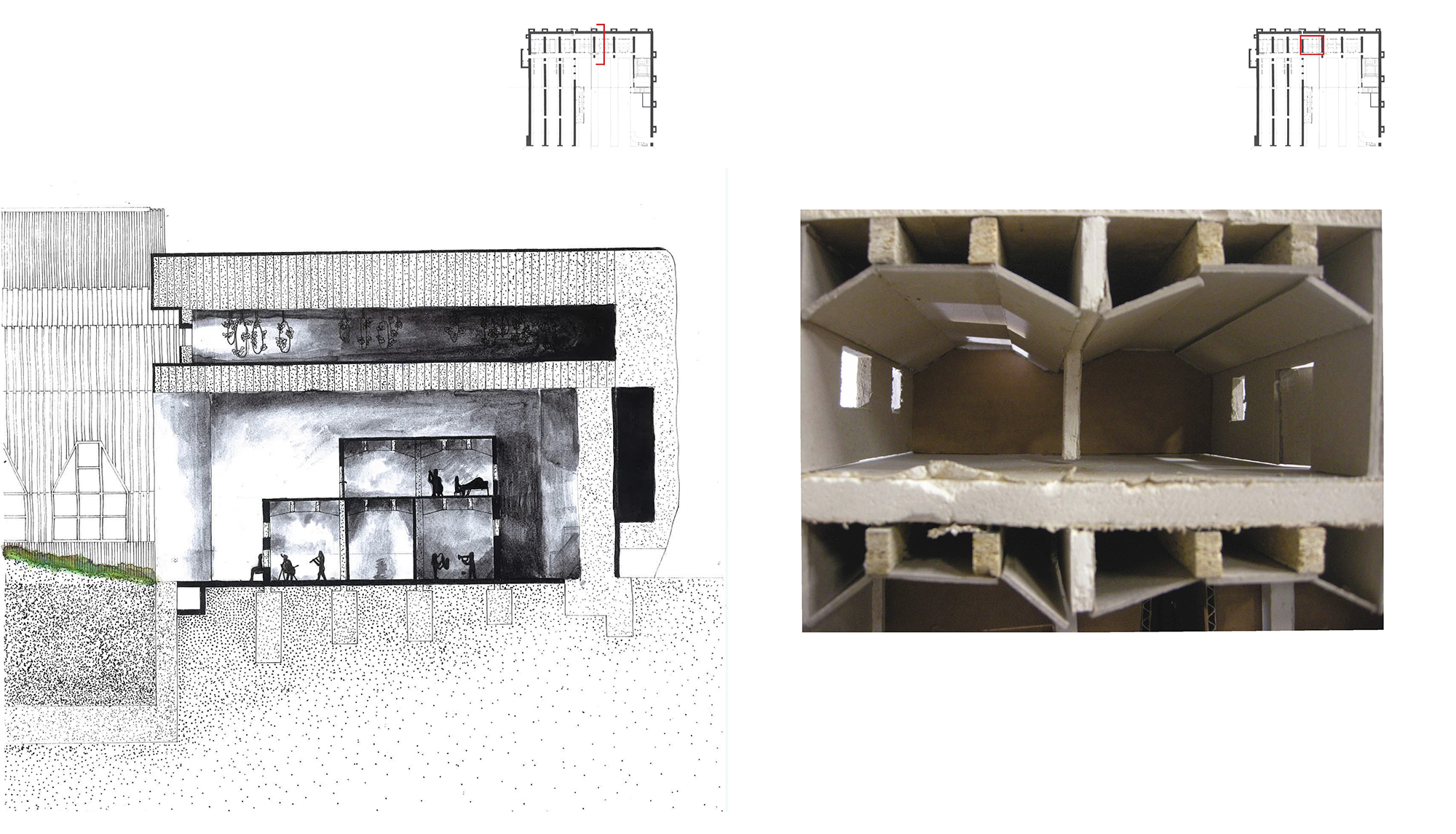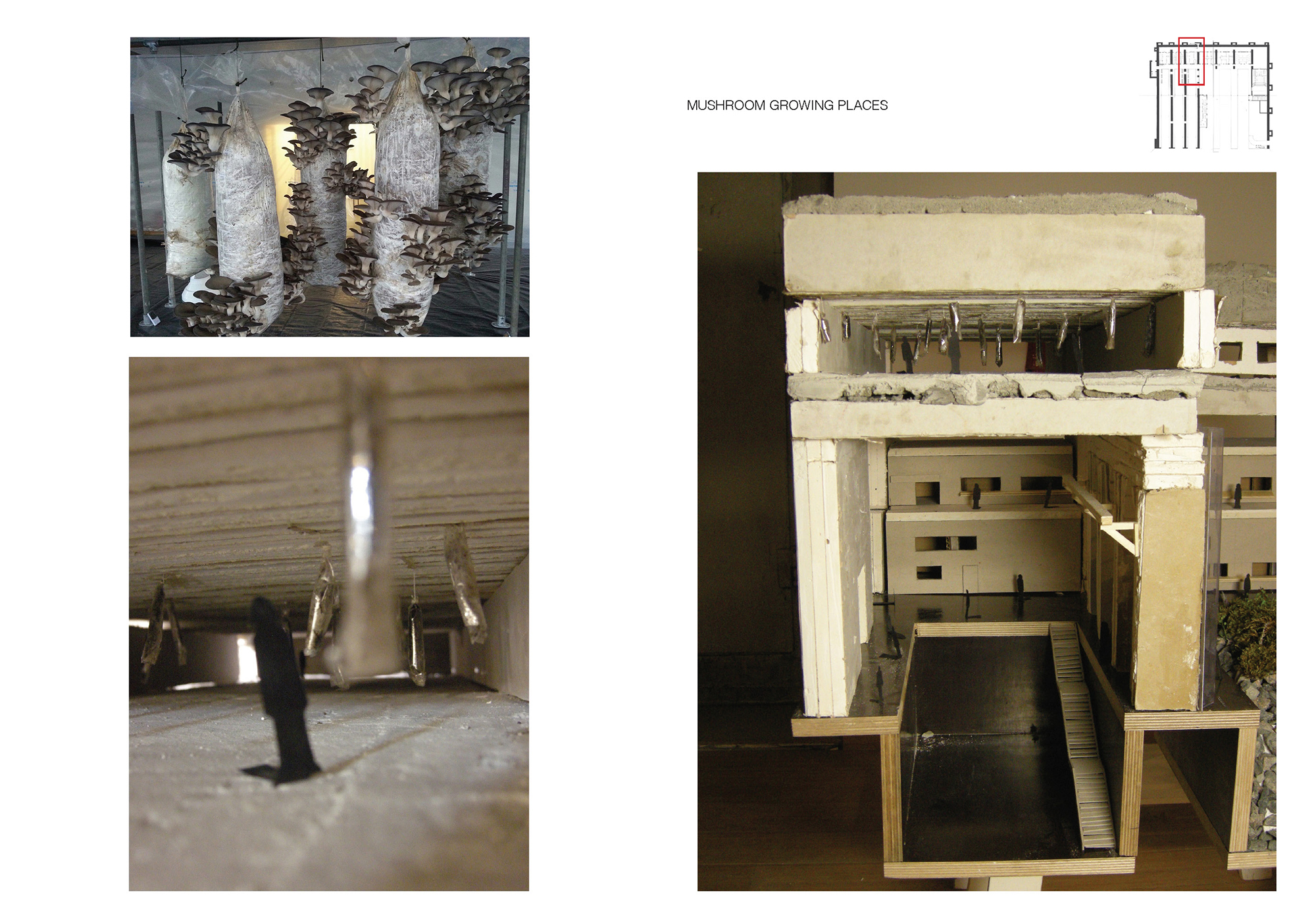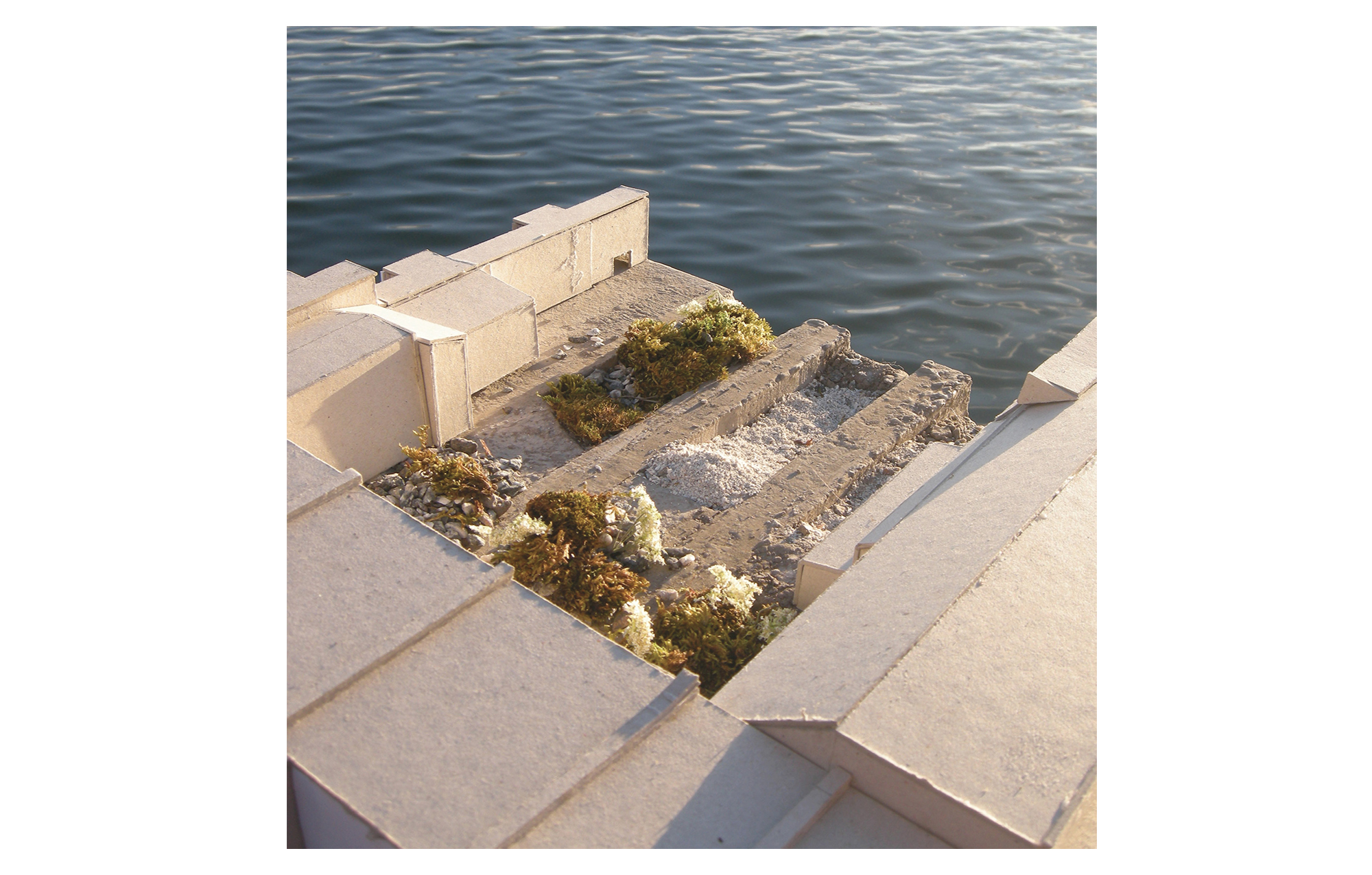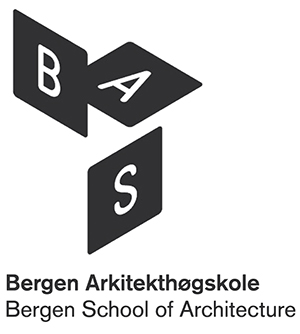EXPLORE BRUNO
Muntaaz Viaene
The u-boat bunker “Bruno” was constructed during the Second World War by the German occupying forces in Laksevåg, Bergen. The bunker was built to store and repair submarines. It consisted of seven docks covered by a six meter thick concrete roof. In 1944 the base was bombed by British missiles hitting among others the Holen School and taking many lives. When the Second World War came to an end the bunker was abandoned. After a failed attempt to demolish the building in the 80s, the Norwegian navy started using it. The navy has decided to relocate to the outskirts of Bergen by 2029. What can Bruno become for Laksevåg in the future?Bruno is characterized by its sheer concrete mass. This solidity becomes a space and creates many sculptural opportunities. The building has the ability to act like a mountain, to be the most important public space in Bergen. In this proposal the built environment is kept intact, but opened up so it can be occupied by people.
The bunker is the last theatrical gesture in the end game of Occidental military history. The ancient ramparts, the ditches surrounding cities, were a means to reorganize a landscape. You still stroll there on Sundays, and raise vegetables close to the moats, and plant flowers on the plat-forms of the batteries. Paul Virilio, Bunker Archeology
The base is closed off towards its surroundings but the central courtyard is open to the sea. This semi hortus conclusus (enclosed garden) has specific qualities, such as the presence of the water and sunlight all year around (whereas the rest of Laksevåg lays in the shadow of the mountain in winter). In the proposal the sea enters the garden so people can experience the tide and have a close contact with the water.
When the wall is punctured you are faced with a green-blue mystical world enveloped by this concrete creature. The sounds of practicing musicians leak into the garden from the old workshop rooms. The docks are made accessible for swimming and in the narrow space between the slabs of the thick roof a forest of mushrooms growing in coffee grounds emerges.
The exploration of scale, mass, light, darkness and acoustics abruptly shifts within the building. The public gets to experience this scenographic radical change while exploring the building. A contrast between the theatrical and the natural qualities of the building is amplified. I was most impressed by a feeling, internal and external, of being immediately crushed. (Paul Virilio). A constant feeling of anticipation is present, like the ascent on a mountain with a peak that never appears.
Bruno doesn’t reveal itself in its totality. You are unable to contemplate the building in its entirety. This inaccessibility has been essential for the development of the project. As Bruno is a functioning naval base, I have not been able to access the building. I have observed it from a distance and acted like a voyeuristic designer. The mystery and lack of overview are manifested in a fragmented, ever-changing experience.
